Summary
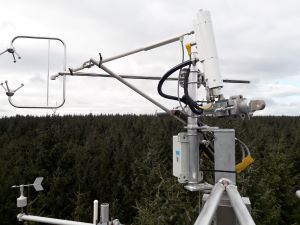
Upland Sitka spruce (Picea sitchensis (Bong.) Carr.) plantations are one of the major forest types in the UK, producing valuable timber products and also helping remove carbon from the atmosphere. Their management is therefore important in improving their greenhouse gas (GHG) balance. As part of our ongoing programme on managing forest carbon and GHG balance we established in 2013 a long-term continuous monitoring site at Harwood Forest in Northumberland. State-of-the-art equipment measure continuously carbon dioxide, water and energy exchange with the atmosphere on two locations; above the canopy of a mature stand and a clear-felled and subsequently restocked site, both on a peaty-gley soil. The project is aiming to quantify the carbon and GHG balance at different points in the forest management cycle by comparing the two sites. Harwood GHG Research Forest is one of the 2 long-term forest carbon dioxide monitoring sites of Forest Research.
Mature forest site
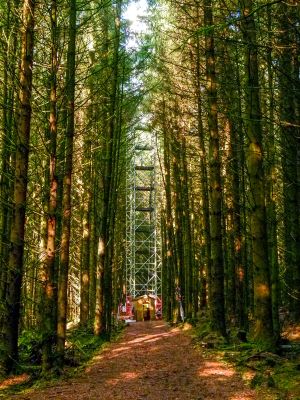
The stand was planted in 1973 and it is a first rotation, even-aged mature Sitka spruce (Picea sitchensis (Bong.) Carr.) yield class 18 m3 ha-1 yr-1 with a leaf area index of 5.7 and 1348 trees per hectare, growing on a peaty-gley soil. The site has an elevation of 290 m and a slope of 2o with mean annual temperature of 7.6 oC and total annual precipitation of 1300 mm.
The measurement equipment consist of a high precision sonic anemometer and infra-red gas analyser mounted on 32 m tower providing high frequency measurements (10 measurements per second) of atmospheric carbon dioxide and water concentration and vertical wind velocity. In 2018 the measurement height was extended by 5 m to account for increase in tree height.
Clear-felled site
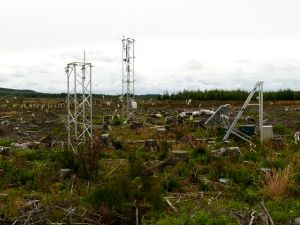
The clear-fell site was established two kilometres north-east of the mature site. The site has an elevation of 280 m and a slope of 5o from the north to the south. Mean annual temperature of 7.3 oC and total annual precipitation of 1110 mm. Prior to clear-felling, the 42 ha area was predominately an old mature Sitka spruce stand planted in 1958 on 25.9 ha (77% of area, yield class 18 m3 ha-1 yr-1), with Scots pine (Pinus sylvestris, L.), Lodgepole pine (Pinus contorta, L.) and Norway spruce (Picea abies, L.) on 3.2, 3.1 and 1.6 ha, respectively, and the remainder (8.2 ha) open ground areas. Felling started in late January 2015 and was completed by early March 2015. A 6 m tower was installed in June 2015 with same equipment installed as in the mature forest. In February 2017 restocking by planting began across the footprint of the tower, predominately with Sitka spruce and a mixture of broadleaves around the area of the tower.
Research Objectives
- Understand and quantify the net impact of harvesting on the whole forest C & GHG balance relative to a closed canopy stand.
- Use measurements of C & GHG components such as soil and stem, to enable modelling of the whole forest cycle balance for future climate scenarios.
Latest Update
- Clear-felling Sitka spruce on peaty-gley soil turned the site to a source of 7.05 tC ha-1 comparing to the net sink of 7.09 tC ha-1 of the mature stand
- On the second year after felling natural regeneration and re-colonisation of ground vegetation reduced the source to 3.05 tC ha-1.
- After restocking the source of carbon was further reduced to 0.97 tC ha-1
- The mature stand was a strong sink with 8.09 and 8.62 tC ha-1 in 2016 and 2017 respectively
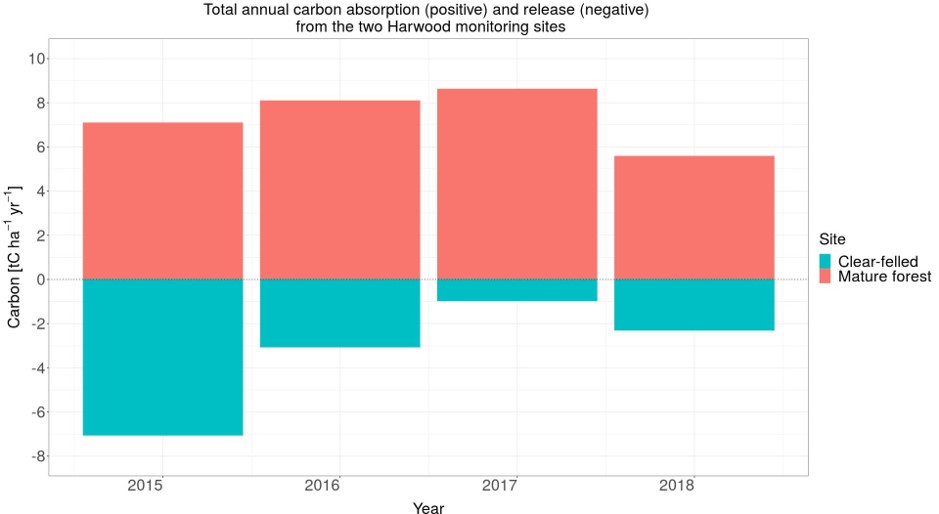
Figure 1: Total annual carbon from the two Harwood flux monitoring sites
- Drought in 2018 reduced the sink of the mature stand to 5.58 tC ha-1
- Drier conditions and increased seedling mortality also turned the restock site to a stronger source of carbon of 2.30 tC ha-1
Impact of 2018 drought on the mature trees carbon sink on peaty-gley soil
Data collected over the past four years showed water usage increased mainly in June-July, causing soil water content to drop. This occurred when there was a peak in CO2 uptake by photosynthesis (Figure 2a) driven by high solar radiation and long days.
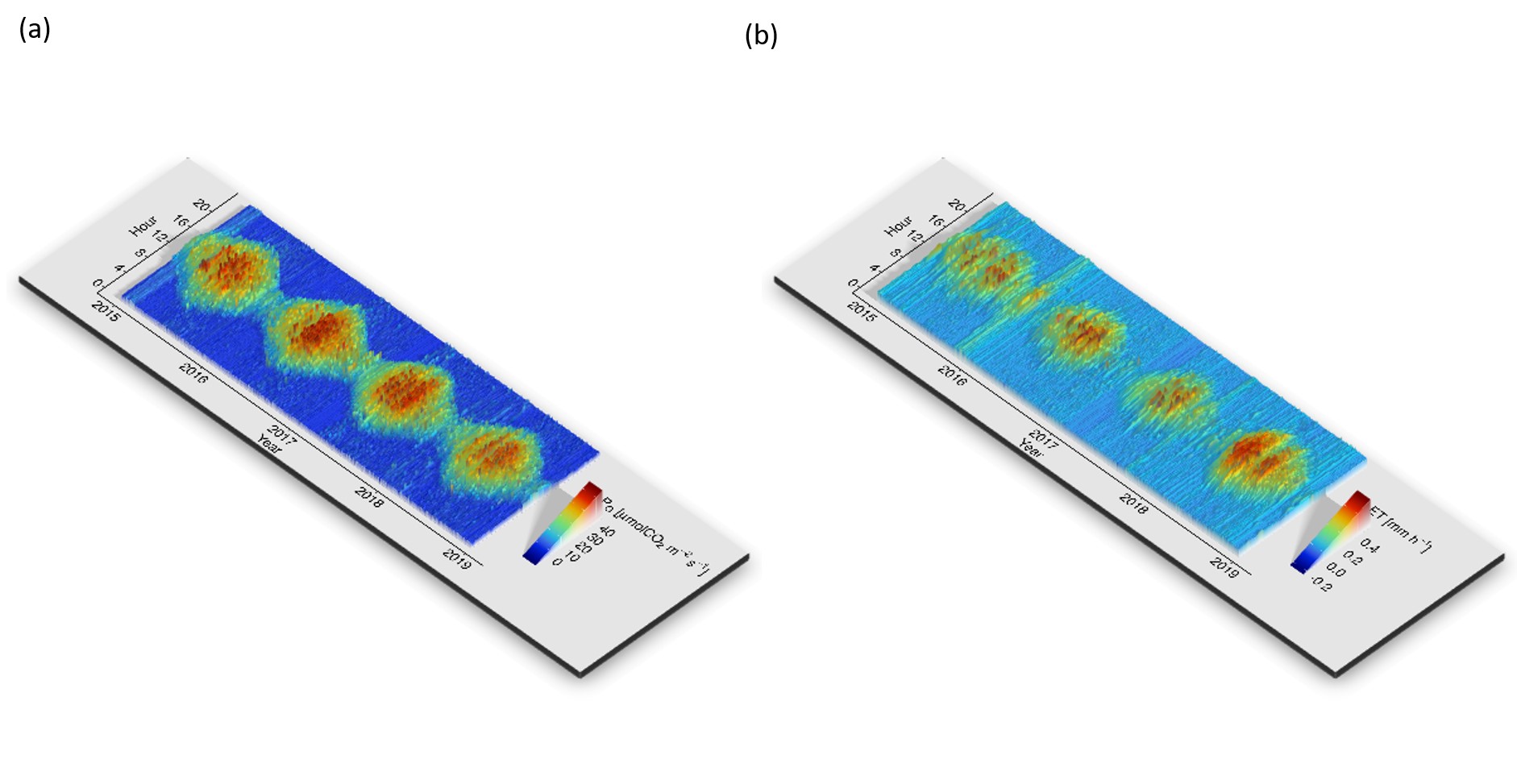
Figure 2: Total CO2 capture from photosynthesis (a) and loss of water through evaporation and transpiration (b) of the mature Sitka spruce. On the x-axis is plotted the time of year and on the y-axis the hour of the day. The oval shape is due to day length with longer day-time during summer and shorter during winter. Colours show diurnal pattern with higher values during mid-day (red) and lower during night-time (blue).
In 2018, a combination of good weather with increased solar radiation, high temperatures and low precipitation during summer, increased losses of water through evapotranspiration (Figure 2b) early in the summer causing soil water to drop earlier to low levels and only replenishing slowly later in the year but without full recovery to previous winter levels. As the soil dried out, evapotranspiration then dropped, and CO2 uptake was reduced in mid-summer due to drought stress despite the high radiation. The total photosynthesis during 2018 was reduced by 5% compared to the average for the previous three years while warm and dry conditions increased respiration losses by 7%. Overall, drought stress reduced net CO2 uptake by 30%.
Funding & Partners
- Managing Forest Carbon and GHG balance programme
